 Your new post is loading...
 Your new post is loading...
Six years ago, at a high school event in suburban New Jersey, Michael Shapiro was covering the story for a hyper-local news site he had founded two years earlier when he spotted a journalist from an established local print newspaper from the same town. “I extended my hand to shake hers,” he recalls, “and she turned around and walked away. People who saw it, their eyes opened wide. They couldn’t believe it.” Those were the early days of Shapiro’s foray into hyper-local news. He was a former lawyer who was building a network of websites covering towns in New Jersey, and some of the state’s old-guard journalists, didn’t like it. Getting the cold shoulder from them, he says, was not unusual. “They saw us as a threat,” says Shapiro. “It was also a matter of, ‘ Who are you to come into my town,’ as if it’s their town.” But things have changed considerably since then. Now, Shapiro presides over a rapidly expanding network of 51 hyper-local franchises dotted throughout New Jersey and, more recently, New York state. (Two more just signed on and will launch this spring. A brief expansion into Pennsylvania failed.)...
Business Wire’s 2015 Media Survey is now available and it offers startling results about how journalists see the future of news media. The landscape of media is changing – new platforms and new styles. The New York Times is an institution but it didn’t start off as one. How will we be referring to BuzzFeed decades from now? Will the two seemingly different lines of media style intersect at some point in the future? These questions are part of the debate regarding the future of media and journalists are split.
According to an article published in The Guardian back in 2013, BuzzFeed is described as an, “irreverent US news and entertainment website taking the social web by storm” and investor Kazz Lazerow, co-founder of Buddy Media, described the website as “the defining media company for the social age.”
Only a few years ago, BuzzFeed represented the wave of change the digital age brought upon news media and that wave has only continued to grow. Now, BuzzFeed is challenging traditional forms of news, jockeying to become the standard of journalism.
When asked to decide between The New York Times style and the BuzzFeed style, journalists made clear that while the classical form isn’t going anywhere, it will have to share its place at the top....
In my ‘digital thinking’ class, the goal is for students to emerge fully literate in the changes affecting journalism. Here are the main currents and trends that I expect them to master by the close of the term.
For each, they should understand: What it means, why it’s important, and where things are going with it. I’ve added a link or two to help get you started. And I’m happy to receive your comments about what’s missing from this list....
...Imagine, though, if it turned out that serious news consumers didn’t care about that stuff. Not just teens or those who get all their news from Buzzfeed lists and trending hashtags — but if actual, grown up readers didn’t give a flying toss about church and state.
If that were the case there’d be nothing to stop every financially-challenged newsroom (i.e. every newsroom in the world) from joining the race to the bottom: Selling every headline to the highest bidder, giving every book a positive review (with an affiliate link at the bottom, of course, or even becoming a full-fledged ecommerce company. News organizations, after all, are supposed to serve their readers, and if readers want a completely bought-and-paid-for news agenda, how long will it be until they get their wish?
Judging by the depressing reaction to the Bezos-owned Washington Post’s move to insert giant Amazon affiliate buttons into its news stories, that future might not be far off....
In the last few weeks the shooting down of Malaysia Airlines Flight 17, the Ukrainian crisis and the situation in the Gaza Strip are monopolizing media attention....
Last Wednesday the Twitter account of the Associated Press posted this tweet: BREAKING: Dutch military plane carrying bodies from Malaysia Airlines Flight 17 crash lands in Eindhoven.
The news was verified, the tweet was not wrong from a grammatical point of view, however there was an ambiguity whereby if the word 'crash' is read as a part of the verb 'crashland' rather than as a noun, the meaning becomes the plane which was carrying the bodies of the passengers of the MH17 had crashed. A little later, the account clarified the misunderstanding, but the damage was done with the tweet wrongly interpreted and already shared by thousands of people, sparking the most varied reactions.
The episode has prompted Megan Garber of The Atlantic to write a piece about the use of "breaking news" designation. According to Garber, it was not a necessary piece of news to add to many others re-launched as indispensable 'breaking news' (a plane has landed, after all: it is news in an article, in a context, but not breaking news itself). It is useless to engulf the news ecosystem. "The term 'breaking' is quickly losing its meaning," Garber explains, in agreement with what Felix Salmon stated during the last edition of the International Journalism Festival....
A new survey from Dutch company ING found that 45 percent of international journalists “publish as soon as possible and correct later,” while only 20 percent always do their due diligence before publishing.
Additionally, the 2014 Study Impact of Social Media on News report, created for PR professionals and journalists, reported that one-third of journalists don’t consider social media posts a reliable source of information. Still, 50 percent said the majority of their news tips and facts come from social.
But journalists don’t seem to mind questions of accuracy too much, since 60 percent said they feel less restricted by journalistic standards in their social media reporting. Twenty-two percent reported that they treat social media posts the same way as traditional methods when it comes to journalism ethics....
We don’t typically write about intra-newsroom politics at Nieman Lab, leaving that to Manhattan’s very capable cadre of media reporters. But Abramson’s removal and Dean Baquet’s ascent has apparently inspired someone inside the Times to leak one of the most remarkable documents I’ve seen in my years running the Lab, to Myles Tanzer at BuzzFeed.
It’s the full report of the newsroom innovation team that was given six full months to ask big questions about the Times’ digital strategy. (A summary version of it was leaked last week, but this is the big kahuna.)
Pew's annual omnibus report finds that the transition to digital, and the influx of new money and new ideas, only represents a sliver of activity in the broader media.
In Pew Research Center’s latest State of the News Media report, just out, you get a glimpse of how the worlds of journalism and technology are continuing to merge and the impact that convergence has on the business and editorial prospects of media companies.
A majority of Americans now say they get news through a digital platform: 82 percent reported using a desktop or laptop, while 54 percent got news through mobile devices, according to Pew. Half of social media users share or repost news stories, while 46 percent discuss news on those sites. Audiences are also spending more time watching their screens: 63 percent of U.S. adults now watch online video, and of that, 36 percent watch news video.
At the same time, the companies that are helping to redefine digital news are expanding aggressively: Pew estimates that digital news operations, from the small hyperlocal shops up to the likes of ProPublica, The Huffington Post, and Vice have produced almost 5,000 full-time editorial jobs. Not enough to make up for a decade of losses in newspapers, but significant....
...The news, broken by Bloomberg’s Edmund Lee, that once mighty Forbes is going on the block after 96 years of mostly family ownership, has evoked mostly shrugs—another day, another fire sale of a journalism icon—with much of the discussion surrounding how well Bono and other minority investors have done from their investment. That, and what to do with the carcass.
The asking price of $400 million would represent at best a salvage operation for both the Forbes family and Elevation Partners, which includes Bono and former Apple executive Fred Anderson, and which paid, according to Fortune’s Dan Primack, $265 million (higher than previous reports) for its 45 percent stake back in 2006, valuing the company at $588 million. Elevation has already written down its investment by 75 percent.
If Forbes doesn’t get its asking price, it won’t be for lack of effort. Since 2010, the Forbes story has been a strenuous effort to reinvent itself as a digital media innovator, creating easily the most frenetic site in business news. It has assembled an army of 1,200 (that’s one thousand, two hundred) mostly bloggers producing dozens of posts a day (a mere 45 between 5pm Saturday and 5pm Sunday; e.g. “Practical jet packs finally take off”); embracing native advertising, the ethically problematic mixing of ads and editorial, to an extent few mainstream outlets have; amping up its conferencing business (itself not without problems), among other things....
A look at some of the ways in which mobile journalism, drone journalism, social media and crowdsourcing is being maximised by investigative journalists...
What happens when the age-old practice of investigative journalism collides with emerging technologies and new media?Potentially powerful things, according to a panel at yesterday's BBC social media conference, which looked at some innovative ways investigative reporters are using the latest technology to power their journalism....
BuzzFeed CEO Jonah Peretti just sent a memo to his employees about the company's growth and its plans for the coming year, and it was loaded with some pretty impressive numbers. August was apparently a big month for BuzzFeed, with record traffic of 85 million unique visitors. For contrast, Twitter gets about 91 million U.S. users per month and Amazon gets 77 million U.S. users, according to Quantcast.
Based on U.S. users alone, BuzzFeed has ~41 million users, bigger than Craigslist or AOL.The company saw a record profit as well (no numbers disclosed, but Peretti says that the company went from "zero revenue four years ago to a profitable company with over 300 employees")....
Innovative storytelling, audience engagement, and financial flexibility are key ingredients for newspapers to cope with pressures from competitors, budget constraints, and the speed at which technology is changing."It came as no surprise when The New York Times took home a Pulitzer for 'Snow Fall' - the immersive multimedia package impressed journalists and web designers alike with its seamless integration of text, audio, videos, photos and interactive graphics."The comments in "Trends in Newsrooms 2013," the World Editors Forum's report on the state of the news industry, about the attention-grabbing content, underlined the importance of stories that jump out at readers....
The best thinking about journalism’s future benefits from its being in touch with technology’s potential. But it can get in its own way when it simplifies and repudiates the intelligence of journalism’s past.
That is happening, to a degree, in a discussion gaining momentum lately that journalism should now largely move beyond fact gathering and toward synthesis and interpretation.
The NSA story is just the latest case that shows the importance, and the elusiveness, of simply knowing what has really happened.
In a Nieman Journalism Lab post, Jonathan Stray made the case recently for moving beyond facts, or what might be called The Displacement Theory of Journalism. “The Internet has solved the basic distribution of event-based facts in a variety of ways; no one needs a news organization to know what the White House is saying when all press briefings are posted on YouTube. What we do need is someone to tell us what it means.”...
|
Facebook and Twitter are increasingly becoming news sources for its users, but news is not necessarily the reason why people are logging onto these social networking sites. It just so happens that news ends up being part of the social media experience. That’s according to a new report from the Pew Research Center. "One of the things we saw early on is the degree to which people describe this as 'incidental news...And that's something that's being reinforced." -- Amy Mitchell, director of journalism research for the Pew Research Center The findings cement the fact that both users and news organizations must continue to wrestle with social media, its different features and their implications. “Social media is certainly a part of Americans’ news streams, and it’s going to continue to be a part of that,” said Amy Mitchell, director of journalism research for the Pew Research Center. “And the different ways people connect with these platforms will influence how they learn about their communities and the world.”...
In a break from making millions as the world’s richest ad man, Sir Martin Sorrell was asked how best to understand the new media landscape. Visit the headquarters of Vice Media, said the head of WPP. Later he said: “They understand how millennials think, what content millennials want.”
The enthusiasm of 69-year-old Sorrell, whose company owns a 10% stake in Vice, is shared by many of his media mogul friends. That the Murdochs, via 21st Century Fox, Disney’s Bob Iger and the co-founder of MTV Tom Freston all provide cash-backed enthusiasm for Vice suggests they believe that the company, which started life as a “punk magazine” in Montreal in 1994, could understand young people better than News Corp, Disney or any other more traditional media company.
But how? Vice, with its gonzo-style journalism and access-all-areas attitude (typical headline: I Went Undercover in America’s Toughest Prison), is not easy to define. Yet it has somehow come to define a new media age of shareable video content, mostly because of its success – real or perceived – among young people. For these so-called “millennials” – roughly born between 1980 and 2000 – offer a sort of fountain of youth for a media industry faced with ageing readers and viewers, and distribution models still being disrupted by the internet....
...Such missteps are not surprising. People living through a time of revolutionary change usually fail to grasp what is going on around them. The American news business would get a C minus or worse from any fair-minded professor evaluating its performance in the first phase of the Digital Age. Big, slow-moving organizations steeped in their traditional ways of doing business could not accurately foresee the next stages of a technological whirlwind.
Obviously, new technologies are radically altering the ways in which we learn, teach, communicate, and are entertained. It is impossible to know today where these upheavals may lead, but where they take us matters profoundly. How the digital revolution plays out over time will be particularly important for journalism, and therefore to the United States, because journalism is the craft that provides the lifeblood of a free, democratic society....
F...It may have been coincidental, but around the time this new truism started sinking in, we began to see investment in businesses both new and old that promised serious journalism. Facebook cofounder Chris Hughes bought The New Republic; Jeff Bezos bought The Washington Post; eBay billionaire Pierre Omidyar pledged $250 million to fund First Look Media, which hired Glenn Greenwald, one of the reporters who broke the Snowden revelations in The Guardian. Vox Media, home of tech site the Verge, raised $38 million and BuzzFeed $35 million in new rounds of funding.
With money has come innovation, both in journalism itself and in the tools to produce it. When Ezra Klein left the Post's Wonkblog for a new site funded by Vox Media, it was in part because Vox had built a sophisticated content management system designed with mobile readers in mind. Atavist—founded by WIRED alumni Evan Ratliff and Nicholas Thompson as a net-native platform for magazine-style journalism—built a similar platform that it licenses to other publishers. Such tool sets make it simple to create a seamless mix of text, video, music, maps, charts—a mix that, done right, spells the difference between just reading a story and taking a deep dive. Now this kind of enhanced storytelling is turning up in places beyond journalism, like the Brookings Institution's Brookings Essay, an online series typified by historian Margaret MacMillan's 7,000-word thought piece on the parallels between 1914 and 2014....
BYA decade ago, aspiring journalists could just think about journalism and leave the financial side to others. Now, to be a successful journalist you have to think like an entrepreneur and understand something about the business you’re in.
There have been some ups and downs, to say the least. In the early days, we had the lonely thrill of being “Web pioneers.” Back then, we developed some of the key forms and hallmarks of digital media: news aggregation, blogs, slideshows, the more personal, conversational tone of Web writing and headlines. In 1998, we were the first news site to try a paywall. In 1999, we were the first to get rid of one.
A land rush doesn’t mean serious journalism has turned into a great business. But talent and money flocking to our trade is preferable to a wholesale exodus....
The New York Times is a 150 years old. So you don't expect it to be a content marketing pioneer. Here are lessons from a leaked report that may surprise you.
...The revelations from the recently leaked report into their challenges of facing upstarts and competitors is a compelling insight into publishing and also content marketing.
Content is the weapon of choice to gain attention traffic and advertising revenue in a digital world.
Content marketing lessons
One observation from the report that surprised me away was that they didn’t use social media for marketing but for measuring!
Here are some insights into how companies need to adapt in a digital age with publishing and content marketing. I have also included actual excerpts from the report....
A 96-page internal New York Times report, sent to top executives last month by a committee led by the publisher’s son and obtained by BuzzFeed, paints a dark picture of a newsroom struggling more dramatically than is immediately visible to adjust to the digital world, a newsroom that is hampered primarily by its own storied culture.
The Times report was finalized March 24 by a committee of digitally oriented staffers led by reporter A.G. Sulzberger. His father, Times Publisher Arthur Sulzberger, fired Executive Editor Jill Abramson Tuesday, a decision that doesn’t appear immediately related to the paper’s digital weaknesses.
The report largely ignores legacy competitors and focuses on the new wave of digital companies, including First Look Media, Vox, Huffington Post, Business Insider, and BuzzFeed....
If you want to peer into the future of journalism, do yourself a favor and look to Jay Rosen's Studio 20 journalism program at NYU. Sure, I may be biased: I graduated from the program in 2011.
...Glass also underlines the frustrations of working on someone else’s platform, on their rules. Hogan imagines that one of the most effective uses of Glass is livestreaming. But despite the fact that Glass is technologically capable of livestreaming, Google refused to unlock the feature, even after numerous pleas from Hogan and the team at Thunderdome.
Where Google Glass really shines is in capturing first-person experiences. Last October, the Stanford basketball team wore Google Glass during warmups to show fans what it’s like to be a player on a top-tier NCAA program. Experiments like these may not be Pulitzer-worthy. But imagine the same technique used in a riot or a warzone. It might require some editing and packaging, but visceral first-person footage has the potential to be extremely powerful....
Across the country, newspapers are leaving their old haunts and shifting to cheaper buildings — and taking the opportunity to reshape how their newsrooms look.
... An upcoming white paper I’m writing for Tow will look further into how these space changes facilitate breaking news, but for now, suffice it to say that this kind of organization creates a centralized production and distribution platform for newsrooms hungry to stay on top of the latest.Other newsrooms are taking the opportunity to brand moves as organizational change as well, looking beyond nostalgia.
In an article announcing its move, the Syracuse Post-Standard’s headline read “Syracuse Media Group’s move signals shift to digital-first focus for news and ads.” As the lede put it: “Goodbye, cubicles and copy editors. Hello, collaborative work space and curators.”...
Curation is a relatively new term in journalism, but the practice is as old as journalism itself. Every act of journalism is an act of curation: think of how a news report or feature selects and combines elements from a range of sources (first hand sources, background facts, first or second hand colour). Not only that: every act of publishing is, too: selecting and combining different types of content to ensure a news or content ‘mix’.
Amazon’s Jeff Bezos’ in his talk to employees at the Washington Post said: “People will buy a package … they will not pay for a story.” Previously that package was limited to what your staff produced, and wire copy. But as more content becomes digitised, it is possible to combine more content from a wider variety of sources in a range of media - and on any one of a number of platforms.
Curation is nothing new – but it is becoming harder...
The New York Times Company did the world of journalism a big favor today.The company finally disclosed the exact revenues of its digital business.The numbers were impressive. And they made clear that no one ever needs to fret about the future of journalism again.Specifically, the New York Times reported that the revenue of its digital business is now about $360 million a year....
Traditional journalists probably won't like a lot of how Upworthy's become one of the fastest growing aggregators on the web. But it's hard to question the effectiveness of its methods.
Back in November, the Lab’s own Adrienne LaFrance wrote a number of words about Upworthy, a social packaging and not-quite-news site that has become remarkably successful at making “meaningful content” go viral. She delved into their obsession with testing headlines, their commitment to things that matter, their aggressive pushes across social media, and their commitment to finding stories with emotional resonance.
Things have continued to go well for Upworthy — they’re up to 10 million monthly uniques from 7.5. At the Personal Democracy Forum in New York, editorial director Sara Critchfield shared what she sees as Upworthy’s secret sauce for shareability, namely, seeking out content that generates a significant emotional response from both the reader and the writer....
|



 Your new post is loading...
Your new post is loading...

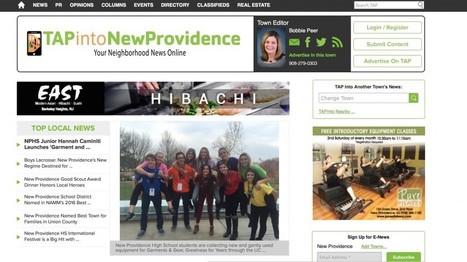

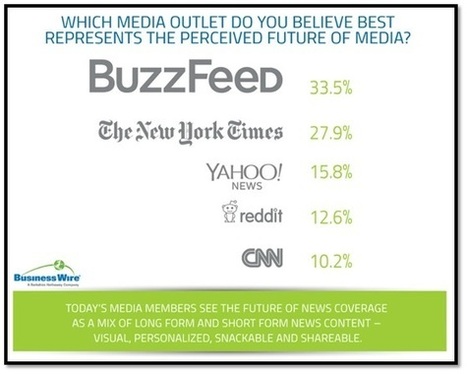

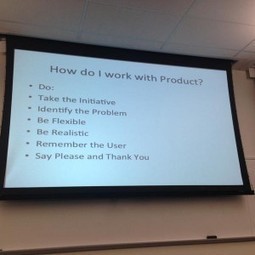












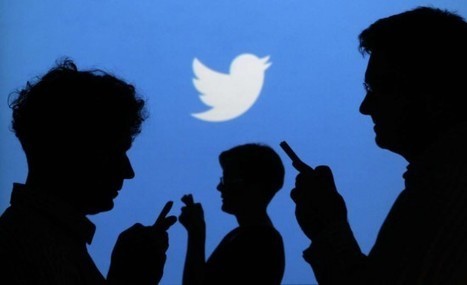



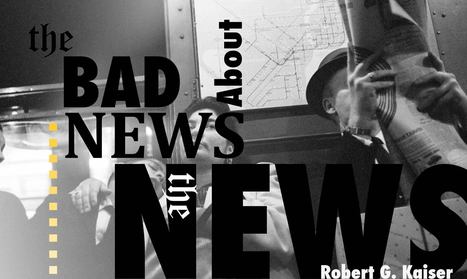








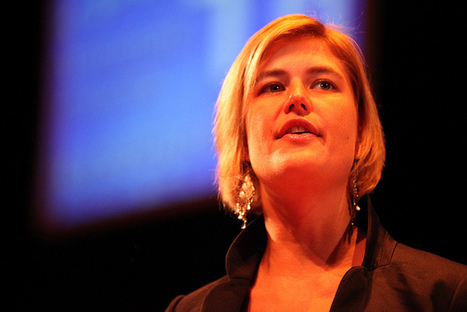






Hyperllocal news is thriving with TAPinto. Good story.